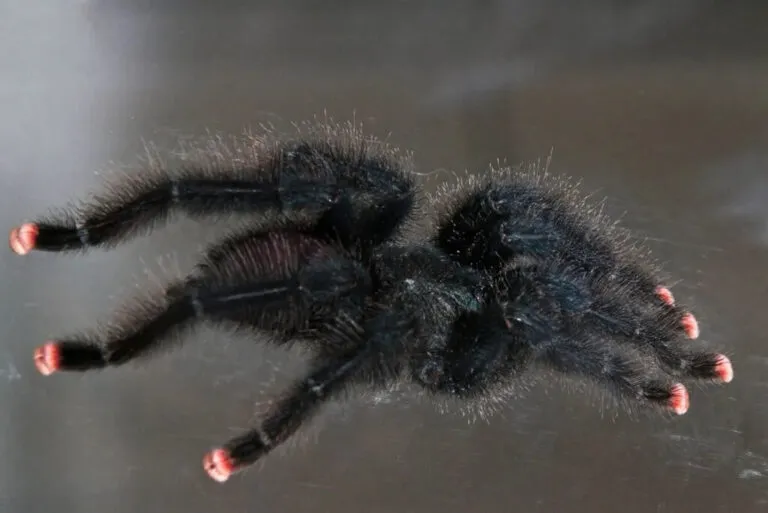Pink Toe Tarantula Care Top 5 Facts
The Pink Toe Tarantula (Avicularia avicularia) is a captivating arboreal species, prized for its striking appearance and relatively docile temperament. Their care, however, requires specific attention to detail to ensure their health and well-being. This guide provides five essential facts to successfully care for your Pink Toe Tarantula, covering habitat, feeding, handling, and health. Understanding these key aspects of husbandry will help you provide a thriving environment for your fascinating pet. Proper care not only enhances their longevity but also allows you to enjoy observing their unique behaviors and characteristics.
Habitat Essentials
Creating the right habitat is crucial for the health and happiness of your Pink Toe Tarantula. They are arboreal, meaning they live in trees, so their enclosure should reflect this. The setup must provide a safe and enriching environment that caters to their natural behaviors. This involves selecting the right size enclosure, choosing appropriate substrate, maintaining the correct humidity and ventilation, and regulating temperature. All these elements work together to mimic their natural habitat, reducing stress and promoting overall well-being.
Enclosure Size
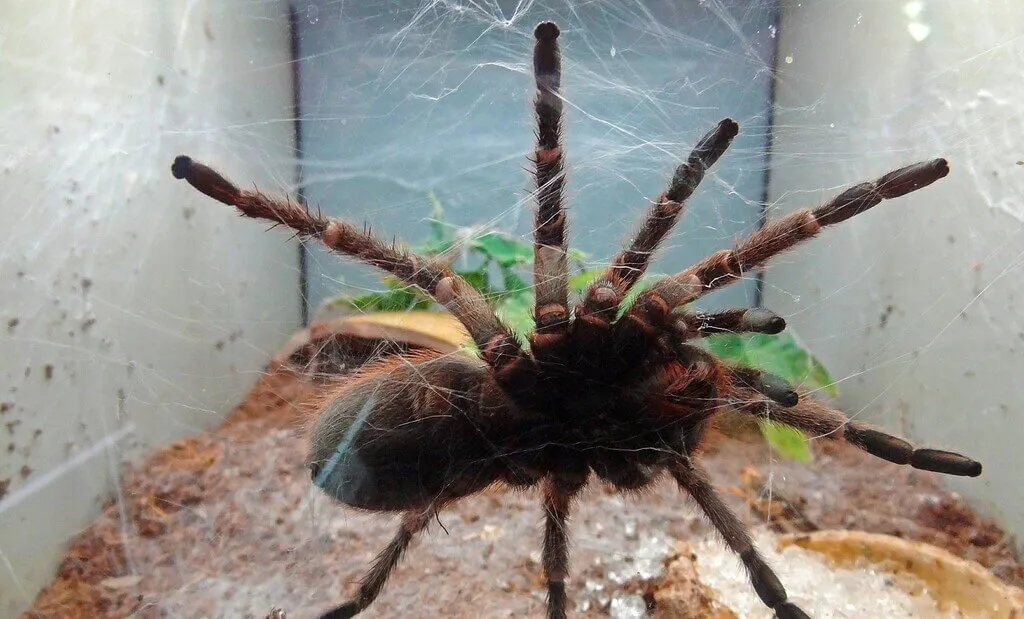
The enclosure size is paramount for your Pink Toe Tarantula’s well-being. A good rule of thumb is to provide an enclosure that is at least three times the tarantula’s leg span in width and height. For slings (spiderlings), a small deli cup with ventilation holes is suitable. As they grow, transition them to larger enclosures, such as a 10-gallon tank for juveniles and a 20-gallon tall tank for adults. The height is particularly important for arboreal species, allowing them to climb and feel secure. Overcrowding or insufficient space can lead to stress and behavioral issues.
Substrate Requirements
The substrate helps maintain humidity and provides a natural environment. A mixture of coco fiber, peat moss, and a small amount of vermiculite works well. These materials hold moisture, which is vital for the tarantula’s health. The substrate should be deep enough for the tarantula to burrow if it chooses, though Pink Toes are more inclined to build webs in the upper parts of the enclosure. Ensure the substrate is free of pesticides and other harmful chemicals. A depth of 2-4 inches is generally sufficient, depending on the size of the enclosure.
Humidity and Ventilation
Pink Toe Tarantulas require a specific humidity level to thrive. Maintaining humidity between 70% and 80% is ideal. Achieve this by misting the enclosure regularly, but avoid soaking the substrate, as this can lead to mold. Proper ventilation is equally important to prevent mold growth and ensure the tarantula has fresh air. Provide cross-ventilation by creating holes on opposite sides of the enclosure. Regular monitoring with a hygrometer is essential to track humidity levels and make adjustments as needed. Good ventilation helps to prevent respiratory issues and keeps the tarantula healthy.
Temperature Control
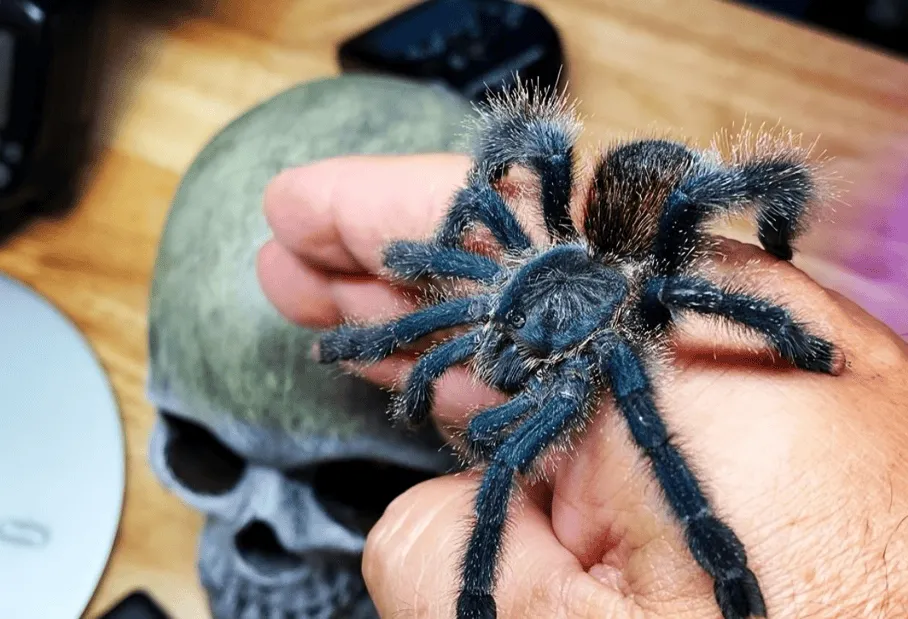
Temperature is a critical aspect of Pink Toe Tarantula care. They thrive in temperatures ranging from 75°F to 80°F (24°C to 27°C). Maintain this temperature range using a heat lamp or a heat mat placed on the side of the enclosure, never directly under it. Avoid direct heat sources, as they can overheat the enclosure and harm the tarantula. Monitor the temperature with a thermometer to ensure the environment remains stable. Sudden temperature fluctuations can stress the tarantula and affect its appetite and activity levels.
Feeding Your Pink Toe
Feeding your Pink Toe Tarantula correctly is crucial for its health and growth. These tarantulas are opportunistic feeders and will readily consume a variety of insects. The diet should be balanced and varied to provide essential nutrients. Understanding prey selection, feeding frequency, and hydration needs will help you provide the best care and keep your tarantula thriving. Proper feeding practices promote healthy molting and overall vitality.
Prey Selection and Size
Choose prey that is appropriate for the tarantula’s size. Crickets, roaches, mealworms, and even small moths are suitable. The general rule is to offer prey that is no larger than the tarantula’s body size. For slings, flightless fruit flies or pinhead crickets are good choices. Ensure the prey is gut-loaded with nutritious food before feeding. This ensures the tarantula receives all the necessary vitamins and minerals. Avoid feeding wild-caught insects, as they can carry parasites or pesticides.
Feeding Frequency
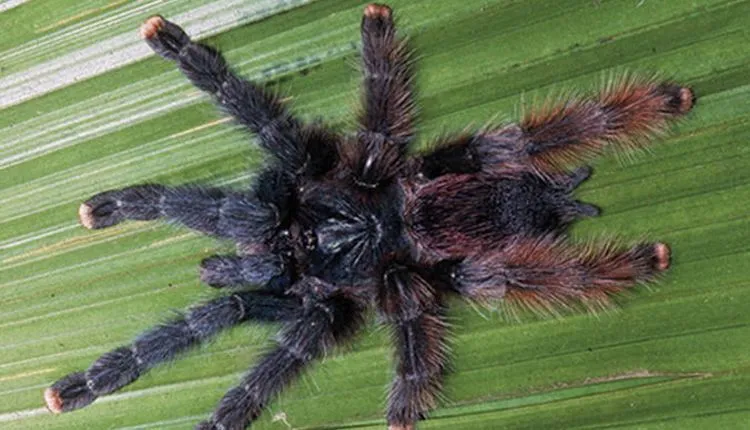
Feeding frequency depends on the tarantula’s age and size. Spiderlings should be fed 2-3 times a week, while juveniles can be fed once or twice a week. Adults may only need to be fed once every 1-2 weeks. Adjust the feeding schedule based on the tarantula’s appetite and body condition. A tarantula that appears plump is well-fed, while a skinny one may need more frequent feeding. Remove any uneaten prey within 24 hours to prevent stress and potential harm to the tarantula.
Watering and Hydration
Provide a shallow water dish with fresh water at all times. Pink Toe Tarantulas need constant access to water to stay hydrated. Use a small dish, such as a bottle cap, for slings. Ensure the water dish is easily accessible and cannot be tipped over. Mist the enclosure regularly, especially during molting, to maintain humidity and provide a source of water. Monitor the water level and refill the dish as needed. Dehydration can be fatal, so providing adequate water is a critical part of their care.
Handling and Safety
Handling a Pink Toe Tarantula is not typically recommended unless absolutely necessary. These tarantulas are generally docile, but they can still be startled and may bite or flick urticating hairs as a defense mechanism. Handling should be done with caution and an understanding of the tarantula’s behavior. Prioritizing safety for both you and the tarantula is paramount. Proper handling techniques minimize the risk of harm and stress to the animal. Observe their behavior to gauge their comfort level before any interaction.
Tarantula Behavior
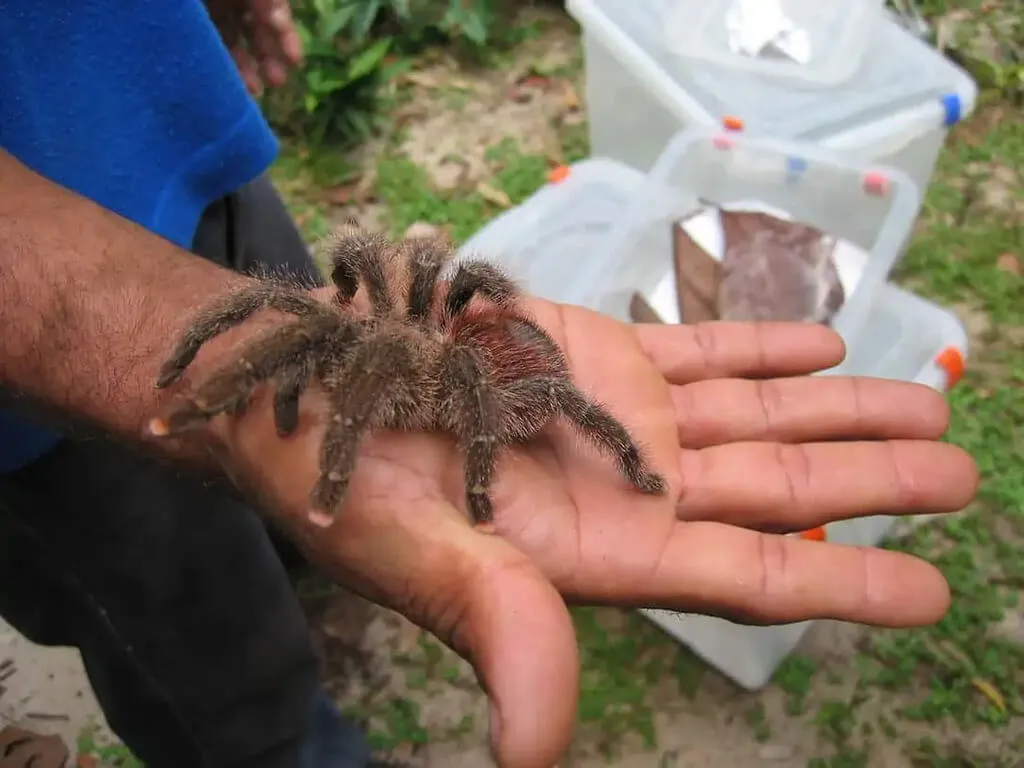
Understanding tarantula behavior helps to handle them safely. Pink Toes are known for their defensive postures, such as raising their front legs or flicking urticating hairs. If you see these behaviors, it’s best to leave the tarantula alone. They also tend to be skittish and may run if they feel threatened. Observe your tarantula’s movements and posture to gauge its mood. Familiarity with their normal behavior helps you recognize signs of stress or discomfort, enabling you to avoid any unnecessary interaction.
Safe Handling Practices
If you must handle your Pink Toe Tarantula, do so with extreme care. Handle them close to the ground to minimize the risk of injury if they fall. Use a soft brush to gently coax them onto your hand. Avoid sudden movements or loud noises, as they can startle the tarantula. Always wash your hands thoroughly before and after handling. Be aware of any urticating hairs and avoid contact with your eyes and mouth. Keeping interactions brief and avoiding handling if not necessary will help to ensure the tarantula’s well-being.
Health and Common Issues
Proper care helps prevent many health issues, but it’s important to be aware of potential problems. Recognizing the signs of illness or stress early can lead to prompt treatment and improve the tarantula’s chances of survival. Regular observation and attention to the enclosure environment are essential. Understanding common issues like shedding problems and diseases will help you keep your Pink Toe Tarantula healthy and thriving. Regular inspection for any unusual behavior or physical changes will help you identify problems early on.
Shedding and Molting
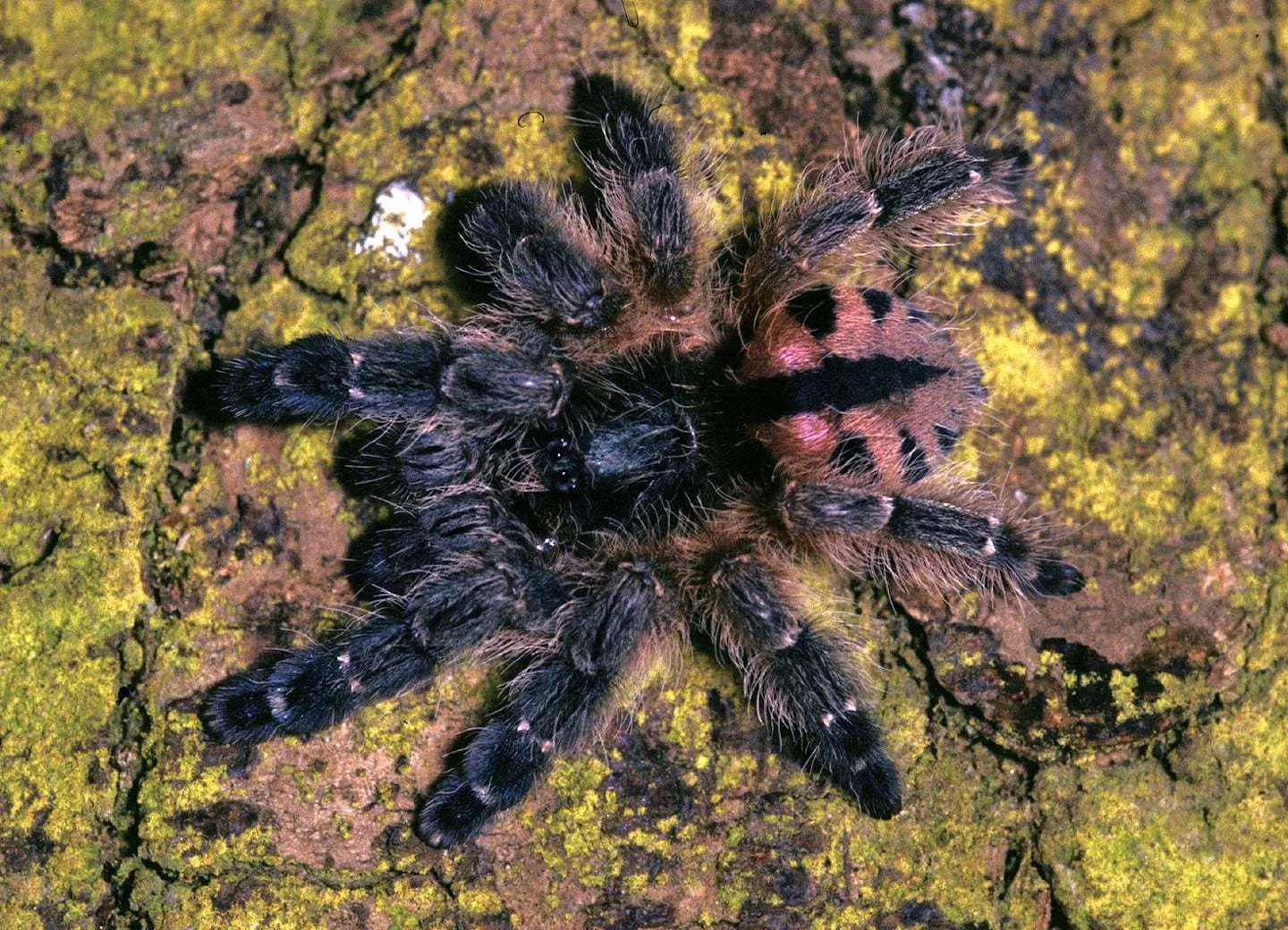
Shedding, or molting, is a natural process where tarantulas shed their exoskeleton to grow. During molting, tarantulas are vulnerable and should be left undisturbed. The tarantula will typically flip onto its back. Increase humidity during molting by misting the enclosure more frequently. Do not feed the tarantula for several days before and after molting. After molting, the tarantula’s fangs and body will be soft. Allow the tarantula a few days to harden before offering food. A successful molt is a sign of a healthy tarantula.
Identifying and Treating Diseases
While Pink Toe Tarantulas are generally hardy, they can be susceptible to diseases. Some signs of illness include lethargy, loss of appetite, and unusual posture. Parasites, bacterial infections, and fungal infections can affect them. If you notice any of these symptoms, isolate the tarantula and consult a veterinarian specializing in exotic animals. Preventative measures include maintaining a clean and appropriate environment, providing a balanced diet, and avoiding exposure to contaminated materials. Early intervention is essential for treating illnesses effectively.
